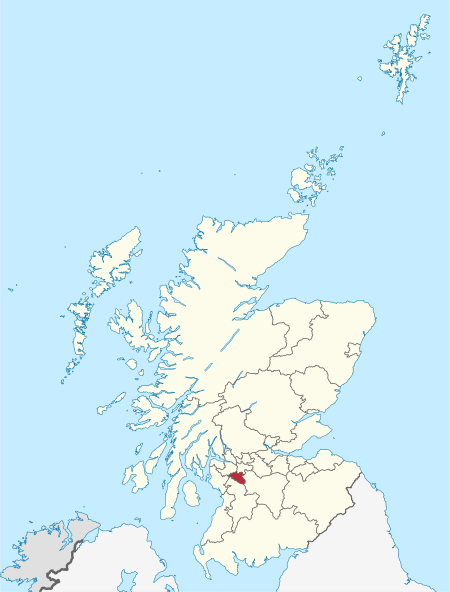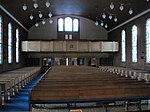East Renfrewshire

East Renfrewshire (Scots: Aest Renfrewshire; Scottish Gaelic: Siorrachd Rinn Friù an Ear) is one of 32 council areas of Scotland. Until 1975, it formed part of the county of Renfrewshire for local government purposes along with the modern council areas of Renfrewshire and Inverclyde. These three council areas together still form a single lieutenancy area called Renfrewshire. The East Renfrewshire council area was formed in 1996, as a successor to the Eastwood district which had existed between 1975 and 1996, with the Levern valley (which came from Renfrew district) being annexed. East Renfrewshire has borders with East Ayrshire, Glasgow, Renfrewshire, South Lanarkshire, and North Ayrshire.
Excerpt from the Wikipedia article East Renfrewshire (License: CC BY-SA 3.0, Authors, Images).East Renfrewshire
Arthurlie Drive,
Geographical coordinates (GPS) Address Nearby Places Show on map
Geographical coordinates (GPS)
| Latitude | Longitude |
|---|---|
| N 55.7984 ° | E -4.2907 ° |
Address
Arthurlie Drive
Arthurlie Drive
G46 6UP , Orchardhill
Scotland, United Kingdom
Open on Google Maps







